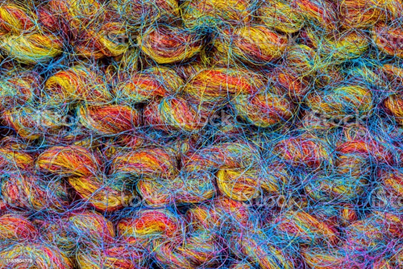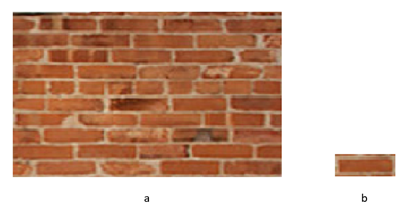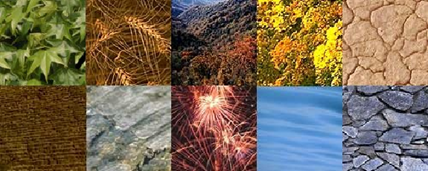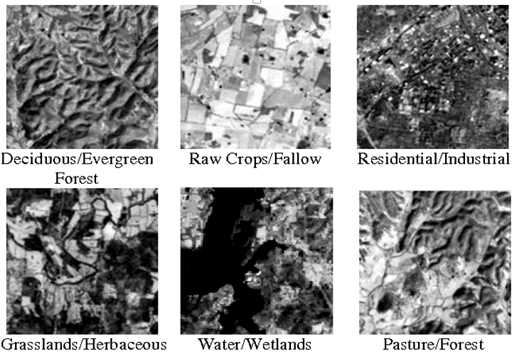Texture analysis and deep learning to improve texture classification effects
Author:Data School Thu Time:2022.09.24

Source: AI Park
This article is about 6400 words. It is recommended to read 10+ minutes
This article introduces you text analysis and various analysis methods, and combines deep learning to improve texture classification.
A unique application field of artificial intelligence is to help verify and evaluate the quality of materials and products. In IBM, we have developed innovative technology, using local mobile devices, professional miniature sensor technology, and AI to provide real -time and solutions, and use smartphone technology to replace the expensive equipment and expensive equipment in the laboratory.
While the artificial intelligence capacity of development quality and reliability inspection, the image of the product and materials needs to be high -definition or micro -scale. Therefore, the design can also represent the local and global unique characteristics of the sample images at the same time. important. The use of texture analysis methods to enrich the deep CNN -based model is a very effective method to achieve better training models.
In order to better understand the application of texture analysis methods in deep learning, let's first understand what texture analysis is.

What is texture?
The texture of roughness, contrast, direction, line similarity, regularity, and roughness can help us understand the spatial arrangement of color or strength in the image. The texture is a duplicate mode of local changes in the image strength (Figure 1).

Figure 1, texture image example (a) original image, (b) texture repeat mode
The composition of the primary or texture elements of the texture of the tattoo is sometimes called the texture. The texture is used to find the color and texture of the object from the image. The color of the image depends on the pixel strength attribute of the elemental texture, and the texture of the texture between the texture is connected.
For example, if the color tone between the texture is very different and the size of the meta texture is small, it is like a fine texture. If a meta text contains many pixels, it is like a rough texture.
We need to understand different types of texture to analyze them correctly. Before starting any projects related to texture, it is best to know what kind of texture you will deal with.
Different types of texture
The classification of texture is difficult, because some attributes, such as regularity, randomness, uniformity, and deformation are not appropriately defined, and the texture type is wide and complex.
Generally, the texture is rough, uneven, dry, luster, sandy, hard, sharp, etc. It is a rough category, and the texture is fine, smooth, wet, wrinkled, silk, soft, dark, etc. It is a smooth category.
In a broad sense, texture is divided into two categories, namely touch and visual texture.
Touching refers to a direct and tangible feeling on the surface, that is, the touch of the touch is like a real object. When an object is touched, we can feel its texture. The feel can be smooth, soft, hard, sticky, rough, sticky, silky, etc. Examples of natural texture include wood, rocks, glass, metals, leaves, etc., as shown in Figure 2.

Figure 2, example of natural texture
Visual texture is defined as the visual impression of the texture to the human observer, that is, it is not a real texture, but it is a method for people to check the texture from the image. The objects in the photo may look rough, but the feeling of the photo is always flat and smooth.
According to the randomness of visual texture, visual patterns can be further divided into regular texture and random texture.
Put the simple and recognizable small -sized parts into the solid cycle mode to form a "rule texture" (Figure 3), and it is difficult to identify the part of the random mode to form a "random texture" (Figure 4).

Figure 3, examples of rules and textures

Figure 4, an example of random texture
So, the biggest problem now is what is the significance of texture analysis in improving the effectiveness of deep learning in computer visual tasks?
Where does texture analysis be used?
Nowadays, texture analysis is an important part of many tasks. From medical images to remote sensing, it is also used in the content query of large image databases.
In industrial testing, when the existing technology cannot be resolved, texture analysis is a powerful tool. Let's take wood manufacturing as an example. In this case, it is difficult to detect crack without using texture analysis.
Texture detection is also used in the classification of the carpet, the appearance of the carpet due to wear. Texture analysis is used for leather inspection, and changes in color, thickness and gray by evaluating. Deadly fragments usually leave scars or folds on the leather.
The application range of texture analysis includes texture classification, such as remote sensing (Figure 5), texture division, such as biomedical imaging (Figure 6). It is also used for image synthesis and pattern recognition tasks, such as identifying painting from photos.
When the objects in the image are classified by the texture attribute rather than the strength, or the threshold technology cannot be correctly classified, the texture analysis played an important role.

Figure 5. Use remote sensing images with texture analysis. Experts in the field of remote sensing conducts cluster recognition and mark on these textures
The figure below (Figure 6) shows the ultrasonic image of the second -rate vein (one -third of the lower part of the figure is blunt zone). The segmentation of the liver, surrounded by white spots, shows a unique texture compared to the surrounding tissue.

Figure 6: Medical images using texture analysis
Today, texture analysis is also used in the food manufacturing industry to understand the quality of food. Foods such as hard sugar, chewy chocolate cookies, crisp biscuits, sticky Taifang sugar, crispy celery, tender steak and other foods all contain a variety of textures. Texture analysis has a large application in this field. For example, the taste characteristics of food can be easily measured by texture analysis. It is also used for a research called "flow change", which is a science that studies material deformation and flow. In other words, it is a reaction when studying objects.
In addition to all of this, texture analysis can be used to measure/evaluate the quality of many products, such as adhesives, medicines, skin/hair care products, polymers, etc.
So far, we have understood where the texture analysis can be applied. Let us see how to classify the image according to the texture.
How to apply texture analysis to classification issues and why is it so important?
So far, we have learned different types of texture and have seen examples of texture analysis in real life. Let us understand how to use it in the classification problem. The main goal of the classifier is to classify texture images by providing descriptive symbols for each image. in other words:
Allocating a sample to a predetermined texture class is called texture classification
When classification of texture, the pattern and texture of the image are considered. The texture -based classification is based on texture characteristics (such as roughness, irregularity, uniformity, smoothness, etc.). Each class in any image data set is likely to have different textures, which makes it a unique attribute and helps the model to classify the image more accurately.
Different technologies and methods of extracting texture
There are many ways to extract texture from the image. In this article, we will discuss the most commonly used and most important texture extraction methods.
GLCM (Grey Level CO-OCCURRENCE MATRIX, gray symbiotic matrix) is a commonly used, basic texture analysis statistics method. GLCM is based on second -order statistics and is used to understand the average correlation between pixels from the perspective of uniformity and homogeneity.
LBP is a method that combines structures and statistical methods, making texture analysis more effective. An important feature of LBP in reality is the tolerance of monotonous gray changes caused by different light conditions. Its simple calculation allows to be used in real -time scenarios.
Salmonic is a change -based method that can capture local frequency and space information. GLCM and LBP pay attention to the arrangement of texture space, but the key element of texture is the scale. According to a psychological-visual research, our brain processing images is multi-scale. Our brain will perform different spatial frequency analysis to identify texture. Based on this idea, the wavelet analysis focuses on frequency and space information.
Forming is an important measure for image self -similarity and roughness. It can characterize the texture that cannot be characterized by other texture analysis methods. There are a variety of technologies to measure the smoothness, uniformity, average value, and standard deviation of the image.
The gradient of the image is a perfect technology that detects the edges of the image, because it is easier to identify the texture, and the edges are high. The texture boundary is used for the effective division of the natural boundary. Once these boundaries are correctly identified, the texture distinction based on these boundaries is very simple.
These five methods have achieved satisfactory results for different texture data sets. Each technology emphasizes the unique attributes of texture. In the following part, we will study the characteristics of these technologies.
Gray symbiotic matrix (GLCM)
GLCM provides information about how the image pixels are associated with each other. This relationship helps us classify texture based on multiple features extracted from GLCM. The matrix gives the location information with pixels with similar strength. The possible strength value set is the line and column label (P) of the two -dimensional array.
GLCM's P, [i, J] first specifies a bit of a bit of the displacement vector
- END -
What should I do if the high -temperature weather continues to air -conditioning in Guangzhou?Maintenance expert support
Yangcheng Evening News all -media reporter Li ChunweiThe heat continued, and the air conditioner became a renewal artifact for many people. However, a neighborhood reported to the Yangcheng Evening
Environmental protection must be heard 丨 Gansu Province adheres to the "precision science according to law" to carry out inspection work
As an extension and supplement to the central ecological environmental protection inspector, the provincial ecological environmental protection inspector is an important link to establish and improve